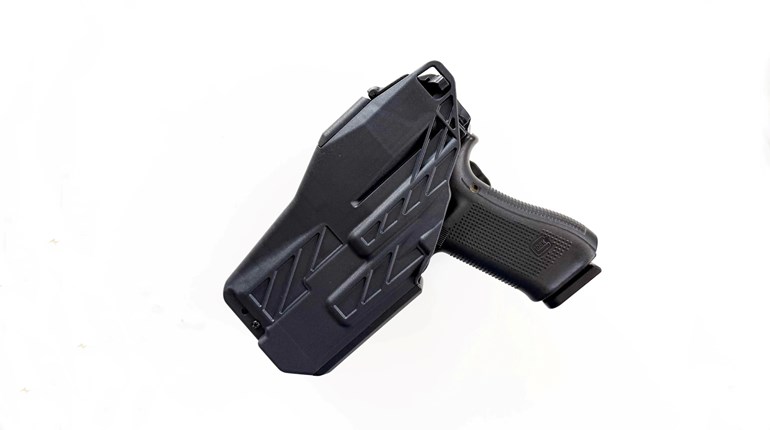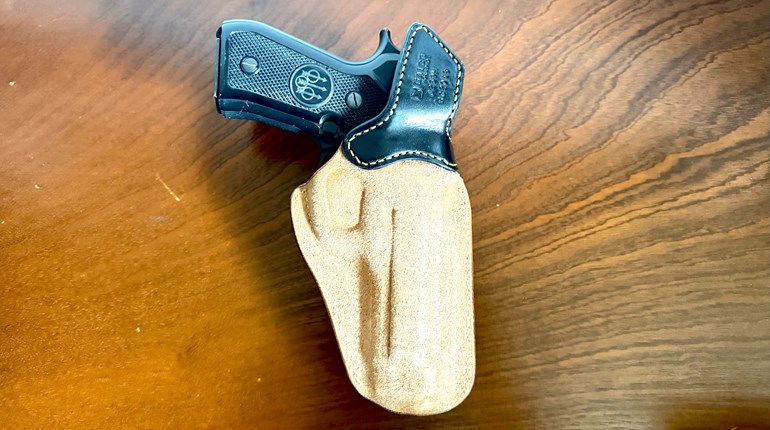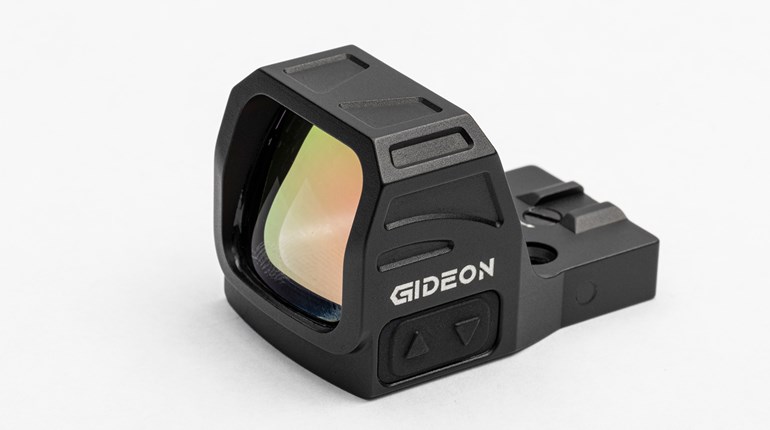
The age of slide-mounted, electronic sights on mainstream handguns has arrived. With Gunsite Academy offering a special edition 9mm Glock G45 with a red dot isn’t a good indicator of their popularity, then what is? These days, you can participate in any training course and notice that most of the students will have guns with dot sights. In the competition world, mounted red dot divisions have become all the rage and extremely competitive.
How Dots on Pistols Are Mounted
The two most common ways that reflex sights are anchored to a pistol’s slide are mounting them directly or using a “optics-ready” factory pre-milled slides and a mounting plate. Direct mounting involves removing material off a slide to create a cavity. This cavity is drilled and tapped with a specific mounting-screw pattern to directly cradle and mate a specific optic. Before dots became mainstream, removing extra material and directly mounting them was the only real option a shooter had. In general, having a slide directly cut to mount an optic is the most robust way to keep that optic on that slide, as there aren’t any extra plates or sets of screws that could fail. Knowledgeable gunsmiths will use the existing metal around the milled area to cradle the base of a reflex optic which provides a mounting solution that is more robust than possible with an optics plate. This permanent modification is in demand by shooters who require hard-use duty gear and or those who have settled on a pistol and optic combination.
The other avenue is making use of mounting plates and factory optics-ready systems. These also have a cavity on the slide. However, instead of a screw pattern that directly corresponds to a single footprint, there is a “master-pattern.” Since a gun company cannot anticipate what make or model of optic each shooter will ultimately install on their handgun, the idea is that shooters will select a mounting plate which fits the factory master-pattern and their actual optic’s footprint above. Optics-ready systems are growing by leaps and bounds, and the industry is moving in that direction, as nearly every major gunmaker now offers this option on their handguns. In addition to this, mounting plates themselves are available as both factory or aftermarket parts.
The Pros and Cons of Direct Milling
 As previously mentioned, directly mounting a dot on a handgun slide is the most secure way to attach it. Not only can a gunsmith cut on a specific area on the slide, but the cuts can also be tailored and customized around the shooter’s sights, requirements and preferences. When done correctly, this approach yields a bespoke solution with the added benefit of not worrying about a mounting plate.
As previously mentioned, directly mounting a dot on a handgun slide is the most secure way to attach it. Not only can a gunsmith cut on a specific area on the slide, but the cuts can also be tailored and customized around the shooter’s sights, requirements and preferences. When done correctly, this approach yields a bespoke solution with the added benefit of not worrying about a mounting plate.
The most obvious downside to mounting a red dot this way is that the handgun’s slide will be permanently modified. A gun will be married to a specific footprint, although adapter plates exist. There is also the hassle of having to ship the slide away for service and the downtime in between waiting for the work to be done and the slide to be returned. The price range for milling work done on slides can cost anywhere from $100 to $300 and up, depending on the company and how they carry out the work. The quality of this work will either make or break the functionality of the dotted pistol, so skimping on service would be ill-advised. Besides the actual cutting, refinishing is another variable to keep in mind. Nitriding or Cerakote are two common ways to refinish the directly milled surfaces.
The Pros and Cons of Optics Plates Systems
 The single biggest benefit of an optics-ready system is convenience. Optics-ready slides were already prepared at the factory, and all one needs to do is to install the corresponding plate and mount their optic of choice. Not only is there no need to pay extra for shipping and handling to send the slide to and from the gunsmith, but there is also no need to wait around while the slide gets sent off for work. Properly mounting an optic to an optics-ready system only takes minutes. Lastly, there is no need to worry about the slide being lost, damaged or stolen in transit. From a cost perspective, even high-end optics plates are also generally cheaper than the cost of custom milling work. (In fairness, many makes and models of optics-ready handguns do cost more than their standard brethren). Because optics-ready systems are not permanent, there’s something to be said for being able to easily switch out dots as needed. Naturally, the biggest downside for these systems is the potential introduction of additional points of failure. Using quality parts and hardware along with best practices certainly helps mitigate some of this risk.
The single biggest benefit of an optics-ready system is convenience. Optics-ready slides were already prepared at the factory, and all one needs to do is to install the corresponding plate and mount their optic of choice. Not only is there no need to pay extra for shipping and handling to send the slide to and from the gunsmith, but there is also no need to wait around while the slide gets sent off for work. Properly mounting an optic to an optics-ready system only takes minutes. Lastly, there is no need to worry about the slide being lost, damaged or stolen in transit. From a cost perspective, even high-end optics plates are also generally cheaper than the cost of custom milling work. (In fairness, many makes and models of optics-ready handguns do cost more than their standard brethren). Because optics-ready systems are not permanent, there’s something to be said for being able to easily switch out dots as needed. Naturally, the biggest downside for these systems is the potential introduction of additional points of failure. Using quality parts and hardware along with best practices certainly helps mitigate some of this risk.
The Takeaway
The fact of the matter is that thousands of rounds are fired daily through various pistols with slide mounted optics regardless of how those sights are attached. There are pros and cons to each choice, and like with many other things, the right answer for a specific shooter may be contextual and specifically depend on their needs. Who can get the most out of an optics-ready handgun? Perhaps it’s the shooter who is newly exploring pistol mounted reflex sights and wants the flexibility to try out various models. Or maybe it’s someone that just wants to be one and done with the whole process to hit the range as soon as possible. On the other hand, it might make more sense for a police organization or military unit that is already married to a specific handgun and reflex sight to directly mount all of their dot to their pistols, as they’ll never worry about plates failing, while benefiting from the most robust mounting method. For individuals, the best case for direct mounting probably depends on the level of investment they have towards a certain handgun and how the math of selling and replacing with an optics-ready version compared with the cost of shipping and milling adds up. Take the CZ Shadow 2, for example. This well-loved competition pistol made its debut in 2016, when USPSA Production Division, which used iron sights, was still popular. A few years later, when the Carry Optics division blew up, many competitors decided to have their existing brace of Shadow 2s milled to continue competing with them.
CZ now sells an optics-ready version of the Shadow 2, which leads to my next point. The market is moving full-steam ahead towards optics-ready options and it looks like in the future, the majority of handguns will all be optics-ready by default. A good example of such a new-wave handgun is Walther’s PDP family. All of them are optics ready by default, and because they’re fairly new they had the benefit of being designed around dots. Springfield Armory’s new Echelon is also worth mentioning. Also a new-wave optics-ready pistol, this one is interesting because its factory “master-pattern” is designed to accept various footprints within the cavity. FN gets an honorable mention because they have a somewhat similar system as well. Direct mounting makes a lot of sense for many applications, but the future is optics-ready.





































